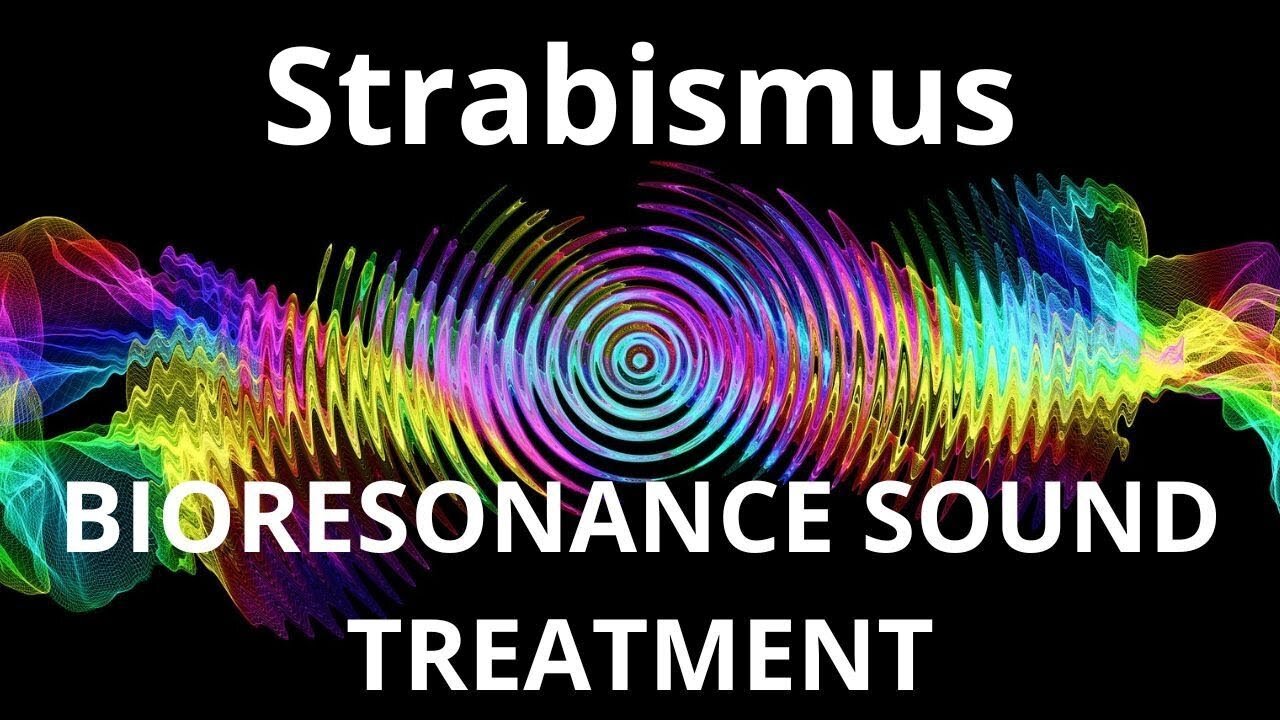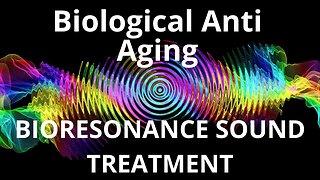Premium Only Content

Strabismus _ Bioresonance Sound Therapy _ Sounds of Nature
#Sounds_of_nature#sound_vibrations#sound_therapy
Strabismus, also known as crossed eyes or lazy eye, is a common eye condition that affects millions of people worldwide. It is a condition in which the eyes do not align properly and can lead to visual impairment, eye strain, and social stigma. While traditional treatments for strabismus include eye patches, surgery, and vision therapy, bioresonance sound therapy may also offer relief for those suffering from this condition.
Bioresonance sound therapy is a non-invasive, holistic therapy that uses sound waves to stimulate the body's cells and tissues, promoting healing and restoring balance. This therapy has been used to treat a range of conditions, including chronic pain, allergies, and emotional imbalances. In recent years, bioresonance sound therapy has been explored as a potential treatment for strabismus.
The theory behind bioresonance sound therapy is that all cells and tissues in the body have a unique frequency or vibration. When the body's cells and tissues are not vibrating at their optimal frequency, it can lead to imbalances in the body and contribute to the development of various conditions, including strabismus. Bioresonance sound therapy aims to restore the body's natural frequency and balance, promoting healing and improving overall health.
There are different types of bioresonance sound therapy techniques used to treat strabismus. One technique involves using specific sound frequencies to stimulate the body's cells and tissues, promoting balance and healing in the eyes. Another technique involves using sound waves to balance the body's energy fields, which can help to improve eye muscle coordination and reduce symptoms associated with strabismus.
One of the benefits of bioresonance sound therapy for strabismus is that it is non-invasive and painless. The therapy does not require the use of medication, surgery, or invasive procedures, making it a safe and natural alternative to traditional treatments. Additionally, bioresonance sound therapy can be customized to the individual's needs, making it a personalized approach to treating strabismus.
While traditional treatments for strabismus can be effective, they often come with side effects and risks. For example, surgery for strabismus can lead to scarring, infection, and vision loss. Vision therapy for strabismus can be time-consuming and costly. Bioresonance sound therapy offers a natural and non-invasive alternative to these treatments, with little to no risk of side effects.
In conclusion, bioresonance sound therapy is a promising alternative therapy for strabismus. The therapy is non-invasive, customized to the individual's needs, and can be used in conjunction with traditional treatments. While more research is needed to fully understand the effectiveness of bioresonance sound therapy for strabismus, many individuals have reported positive results from this natural and holistic approach to improving eye muscle coordination and reducing symptoms associated with strabismus. If you or a loved one is suffering from strabismus, consider exploring bioresonance sound therapy as a potential treatment option.
TO ACHIEVE A POSITIVE RESULT, DAILY LISTENING TO VIDEOS IS REQUIRED.
I wish you health and prosperity!
You can purchase unique medicines in my store:
https://store11998180.company.site/
You have the opportunity to support the channel:
https://destream.net/live/RadSiarAl/donate
-
 29:59
29:59
BIORESONANCE SOUND THERAPY
22 days agoBiological Anti Aging _ Sound therapy session _ Sounds of nature
95 -
 4:14:29
4:14:29
SynthTrax & DJ Cheezus Livestreams
1 day agoFriday Night Synthwave 80s 90s Electronica and more DJ MIX Livestream Feel The Waves Edition
32.3K1 -
 2:09:19
2:09:19
Side Scrollers Podcast
9 hours agoNerd Duel Tournament of Champions! Who Will Win?!
59.4K5 -
 8:53:50
8:53:50
SpartakusLIVE
10 hours agoNEW Easter Egg, SPECIALIST || Duos w/ @GloryJean followed by quads later!
60.4K1 -
 1:40:06
1:40:06
Glenn Greenwald
9 hours agoAaron Maté and Special Guests on the U.S. Role in Ukraine, Gaza's Future & More | SYSTEM UPDATE #462
162K109 -
 3:49:09
3:49:09
Nerdrotic
13 hours ago $23.43 earnedSuperman's James Gunn Reshoots, Harry Potter DOA! R.I.P. Winds of Winter | Friday Night Tights 356
117K17 -
 2:23:47
2:23:47
DasNello
6 hours agoLADIES AND GENTLEMEN, I PRESENT ELDEN RING NIGHT REIGN!!!
28.7K1 -
 5:35:38
5:35:38
tacetmort3m
6 hours ago🔴 LIVE - LAST STREAM BEFORE DUNE? - NO MORE ROOM IN HELL 2
22.6K -
 1:14:57
1:14:57
Sarah Westall
9 hours agoGame Changing Peptide Increases Immunity 50 to 100x Better than Nutrition Alone w/ Dr. Diane Kazer
40.1K6 -
 9:14:52
9:14:52
Dr Disrespect
16 hours ago🔴LIVE - DR DISRESPECT - WARZONE - SNIPING AND WINNING
208K14